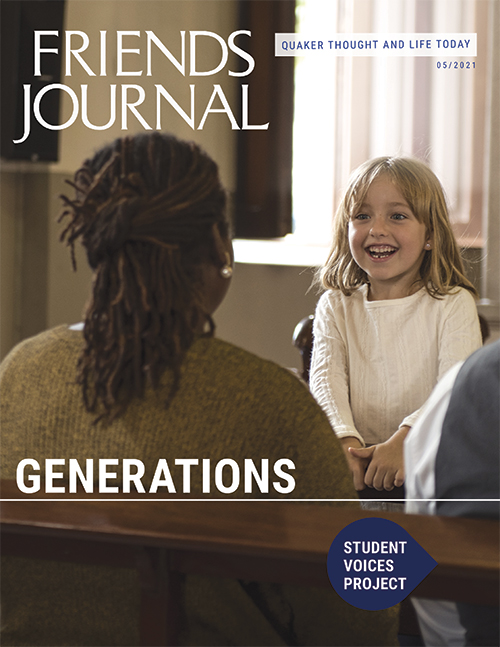Seaver—Paul Siddall Seaver, 88, on August 2, 2020, at home in Palo Alto, Calif. Paul and his twin brother, David, were born in Philadelphia, Pa., on March 19, 1932, to Benjamin and Madge (Tompkins) Seaver. In 1942, the family moved to a dairy farm in Gwynedd, northwest of Philadelphia, where his parents were attracted to the Quaker meeting. Following World War II, Gwynedd Meeting experienced an influx of young men who had been conscientious objectors. Paul and David were inspired by these young Quaker pacifists. Both decided at the age of 14 to join Gwynedd Meeting.
When Paul and David graduated from high school in 1950, they faced the draft for the Korean War. They could have invoked their Quaker upbringing to obtain classification as conscientious objectors. Instead they refused to register for the draft and were sentenced to 18 months in federal prison in Danbury, Conn. They were paroled after serving six-and-a-half months.
Paul completed his undergraduate education at Haverford College. He earned graduate degrees at Harvard University in early modern English history, focusing on religion and radicalism and on the growth and urbanization of London.
In 1954, Paul met Kirsten Andresen, a Norwegian foreign student at Bryn Mawr College. They quickly formed a bond and married in 1956. Their daughter, Hannah, was born in 1960 in London while Paul was doing doctoral research. In 1962, Paul took a teaching job at Reed College in Portland, Ore., where their son, David, was born in 1963. Paul and Kirsten loved to travel. They maintained a flat near Paddington railway station for 32 years, which enabled them to make frequent trips to London to do research.
Paul was very close with his brother, David. It was a painful loss when David died of a stroke at age 53.
In 1964, Paul began a long and distinguished career in the History Department at Stanford University, retiring in 1997. Tributes to his character and service can be found in a memorial notice on Stanford’s website, including his quiet and unassuming brilliance, his wise counsel, his captivating teaching and pioneering research, his selfless devotion to undergraduate education (recognized by two university awards), and his role in building one of the strongest British history programs in the country. His most acclaimed publication, Wallington’s World: A Puritan Artisan in Seventeenth-century London (1985), was one of the first detailed looks at the religious life and thought of a “lower class” Puritan.
In his early years at Stanford during the Vietnam War, Paul counseled young men on their options regarding the draft. He worked closely with other activists, including his father, Ben Seaver, who was then peace education secretary for American Friends Service Committee in San Francisco. Paul served as chairman of the board for the Western Region of the Central Committee for Conscientious Objectors (CCCO), a nonprofit draft counseling organization. It was demanding work, but it was a commitment he couldn’t set aside, not even in the face of threatening phone calls.
Paul had a strong commitment to Palo Alto Meeting. At meeting for worship, he reliably sat in his preferred seat next to those that his mother, Madge, and his aunt Frances Tomkins had occupied for many years. When Paul was invited to talk about why he was drawn to committee work, his answer was simple: “When your meeting calls, you serve.” And indeed, Paul served in various capacities. Not surprisingly, he acted as historian and archivist for many years, sharing his knowledge of Quaker origins and history on multiple occasions.
Paul is survived by his wife, Kirsten Seaver; two children, Hannah Seaver and David Seaver; and four nephews and their families.



Comments on Friendsjournal.org may be used in the Forum of the print magazine and may be edited for length and clarity.